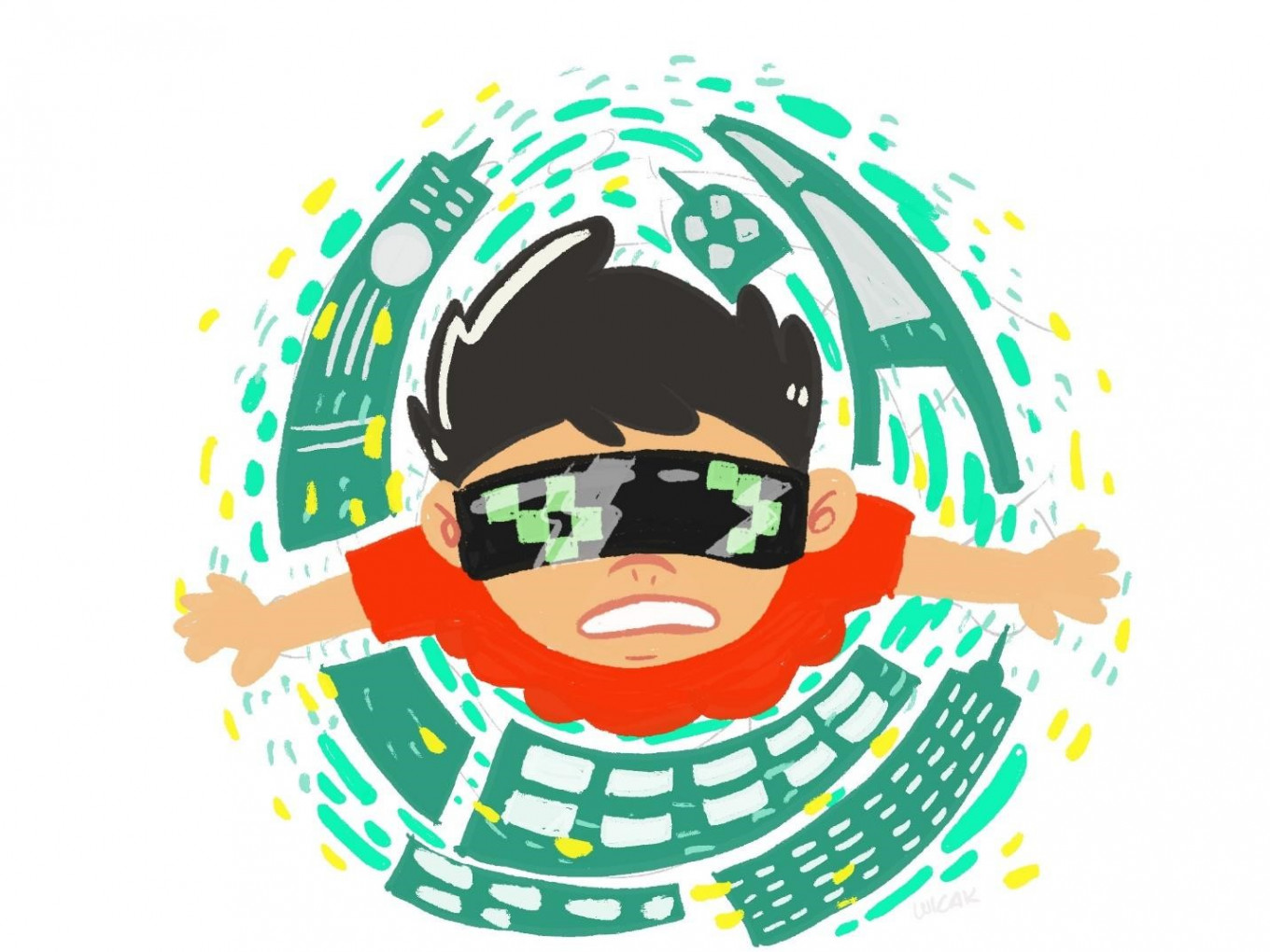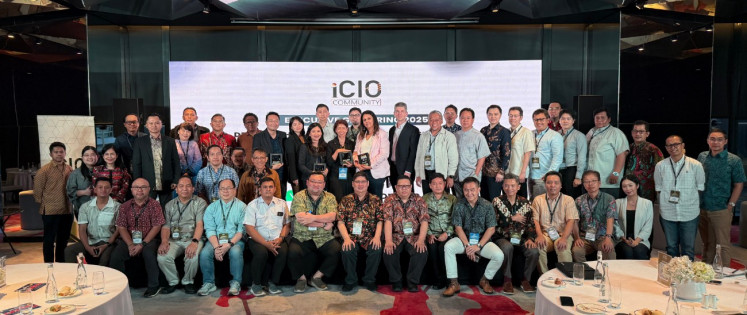Popular Reads
Top Results
Can't find what you're looking for?
View all search resultsPopular Reads
Top Results
Can't find what you're looking for?
View all search resultsMetaverse, the arrival of a new architecture era?
Change text size
Gift Premium Articles
to Anyone
I
n recent times, the so-called “metaverse” has become a popular topic for discussion, touted as a utopia to bring together people from all over the world without being bound by space and time.
Like every other industry, the presence of this metaverse seemingly gives a new gust of wind to the world of architecture. However, architecture in the metaverse has actually been observed for the last decade.
The last decade has brought changes to manual design techniques such as the use of drawing tools, which are now dominated by design software capable of rendering three-dimensional images that can even be integrated through building information system (BIM) to provide digitalized information.
In popular culture, the film industry is one of the most prevalent examples of architectural concepts in the meta world. Several well-known films such as The Matrix, Inception, Ready Player One and Doctor Strange show the role of architecture in a different reality; buildings able to rotate, enlarge, distort and so on.
The metaverse seems to provide a new flow, and may transform existing architectural theories and views.
The concept of a limited physical space reality will collide with an infinite virtual space reality - a seamless virtual interaction space that brings together millions of people regardless of their physical location in the real world. Will architecture evolve according to the fictional?
Metaverse is the trigger for the digital era innovation, where various aspects of life are starting to be presented as virtual entities in the digital world. Objects can no longer be narrated as physical objects; virtual objects that are even imaginary can become assets today.
For those who are not familiar with the metaverse, etymologically the metaverse comes from the word "meta" which means beyond, and "verse" from universe, which when combined can be interpreted to mean beyond the universe.
Although the term was repopularized by Facebook CEO Mark Zuckerberg at the end of 2021 with the concept of human interaction in virtual space, the term metaverse itself first appeared in the 1992 science fiction novel Snow Crash, which depicts humans in the form of avatars interacting in a three-dimensional world.
It can be concluded that virtual space is the key to a new universe for interactions that transcend physical boundaries. Even so, this world may still be a mystery, considering this concept is still in the early stages of development. The metaverse cannot stand alone, as multiple platforms can participate in building this virtual utopia.
If someone asks how big this virtual world will be, the answer lies in limitless imagination.
Imagination is the main driving force for realizing architectural ideas. The design process requires several stages to extract the imagination into a building that stands firm.
So then what if this imagination extraction process does not need to clash with physical logic such as construction, climate, context and other aspects?
Obviously, millions of architectural possibilities will be formed. Limitless imagination seems to have its own place. Even Vitruvius' theory that good architecture must fulfill three principles - firmitas (solidity), utilitas (function) and venustas (beauty) - must negate the principle of solidity, which is irrelevant in the world of the metaverse. Many new architectural theories and views will emerge, along with the emergence of new architects in the metaverse world.
In the future, it is entirely possible that humans will spend more time in the virtual world than the real world. The virtual world will also be built to be more complex to keep up with the development of human activities; not only houses, but even an ecosystem such as a virtual city will also be present along with all the facilities like in the real world.
In the end, the metaverse will be a tool that provides a myriad of potential for architects and urban designers to take part in this new world. The activities of designing space in the metaverse are no longer a clause between architect and client, but they can simply be formed as a contemplation between the architect and their creations in a virtual form.
There is a lot of potential and opportunity for architects to sell their works; not only their services, architects can also sell their work like an artist would sell their paintings. An architect's fame and reputation is no longer fixed on the work that has been built, but in future architectural creations such as sketches, graffiti, three-dimensional works, architectural animation and other designs that will also have their own market. With endless potential and unexplored possibilities, this is certainly a new era for architecture.
However, it obviously would be unfair to only highlight the potential and architectural opportunities that will occur in the Metaverse in the future, as there will be many disruptions, which will clash and cause further bias in the future.
Architecture will be faced with a paradigm where everyone will be able to create whatever they can imagine, regardless of the person having architectural education or not.
In the 2000s, a simulator game called The Sims was popular among teenagers and gamers alike. This simulation game presented a simulation of life, where people could build their own house and have activities in it. The features were made as user-friendly as possible, so that everyone who played it could act as an architect designing their own private residence.
This game seemingly signaled that in the future, a similar disruption will occur in the midst of the presence of architectural tools that make the design process easier and more efficient. The form of architectural buildings in the metaverse that is no longer attached to physical logic will become more accessible and easier for everyone to make happen.
Anyone can create their own room or utopia according to their imagination, yet if everyone can design their own space, then where is the bargaining position of architects in this new era? The answer may not be available at this time. Architecture may need to redefine the fundamentals that underlie architectural work in order to remain recognized as a profession that has a strong character in terms of designing buildings.
In the midst of the turmoil of technological acceleration, architecture will evolve with architects as the main actors in the middle of the metaverse ocean. Architects will bring a new direction in architecture in virtual space, all the while creating new works and theories as well as new standards. In the early stages of the development of this metaverse, architecture is also made to grope with all its potential and disruption.
In the future, architecture will have to strengthen the profession of architects in a time that allows people to realize all their imaginations. The metaverse is a new era in finding architectural identity in the midst of a rapidly digitalizing world.
Writer: Gde Bagus Andhika Wicaksana S. T., M. T.
Lecturer of Architecture Program, Faculty of Engineering dan Planning Warmadewa University











